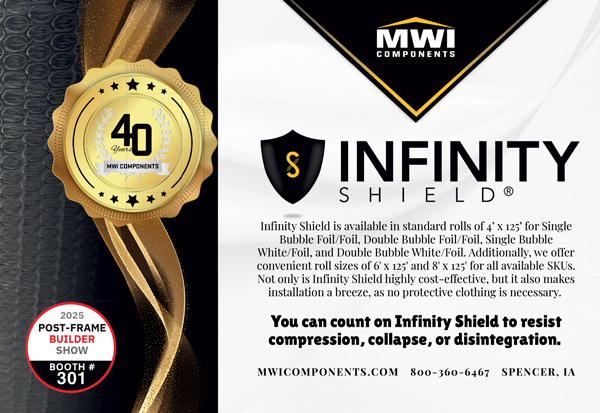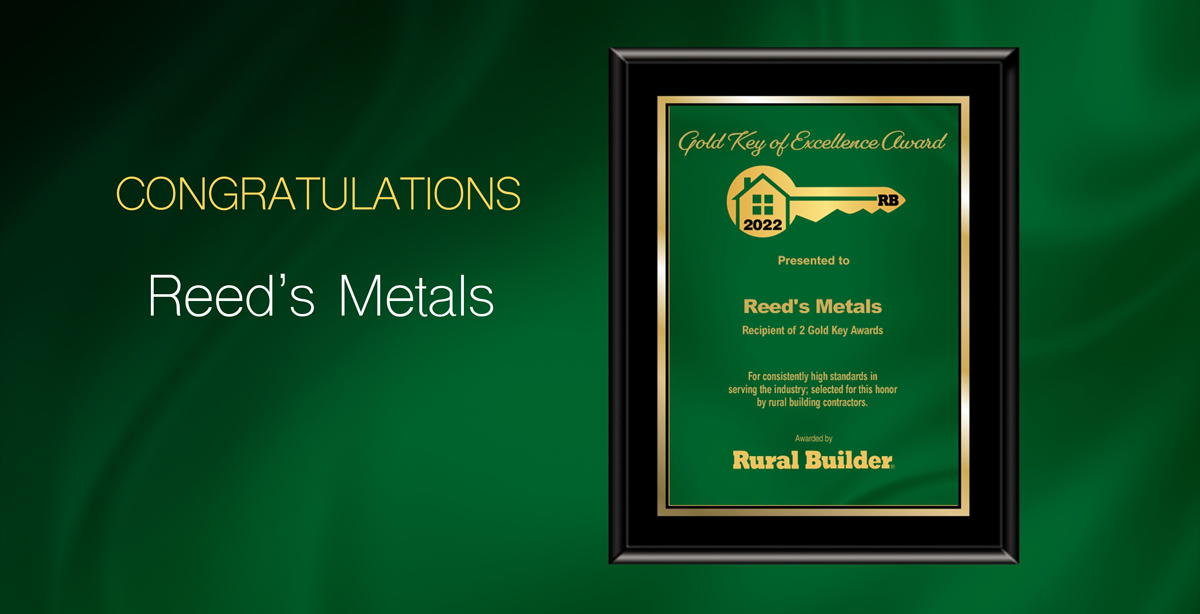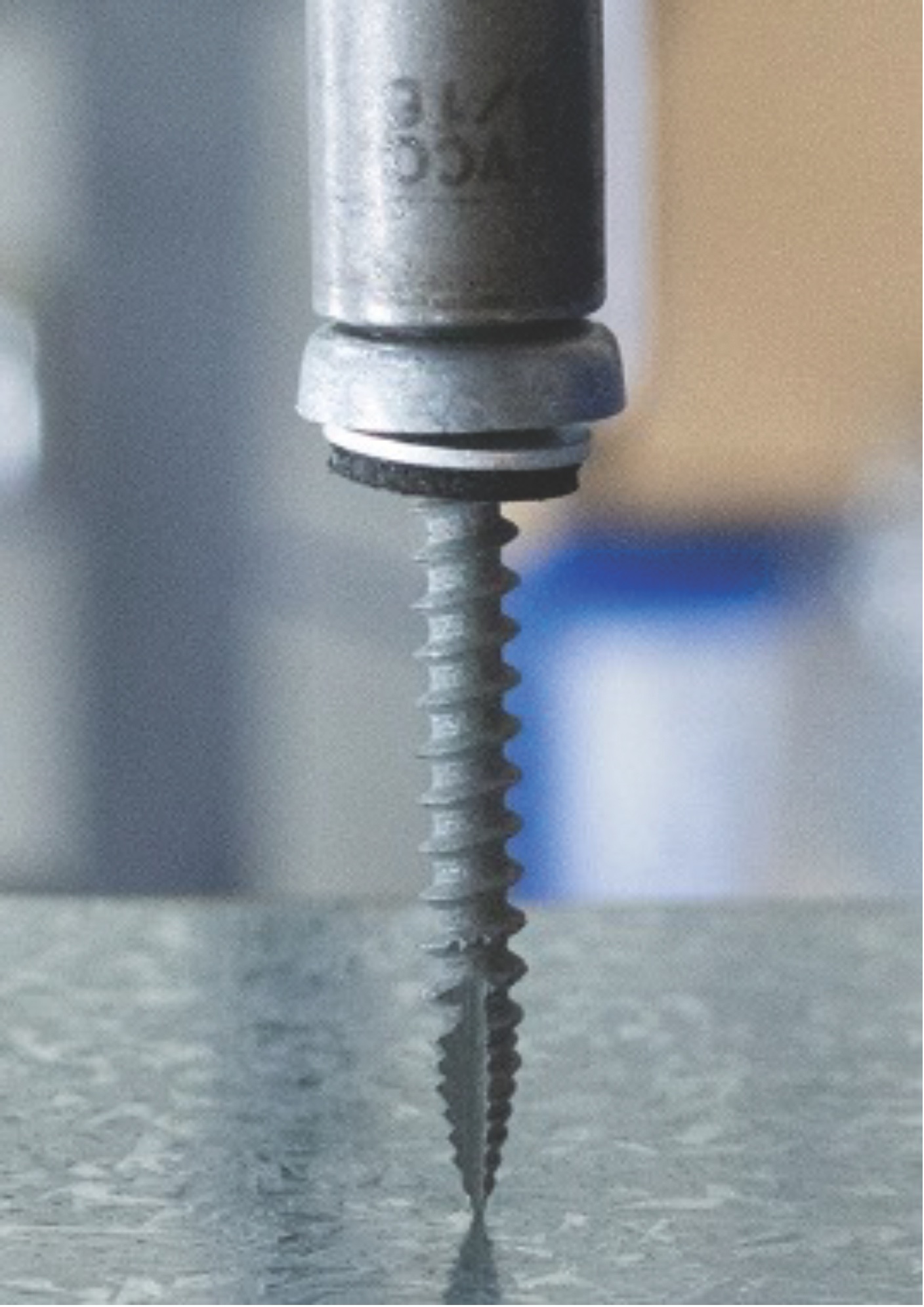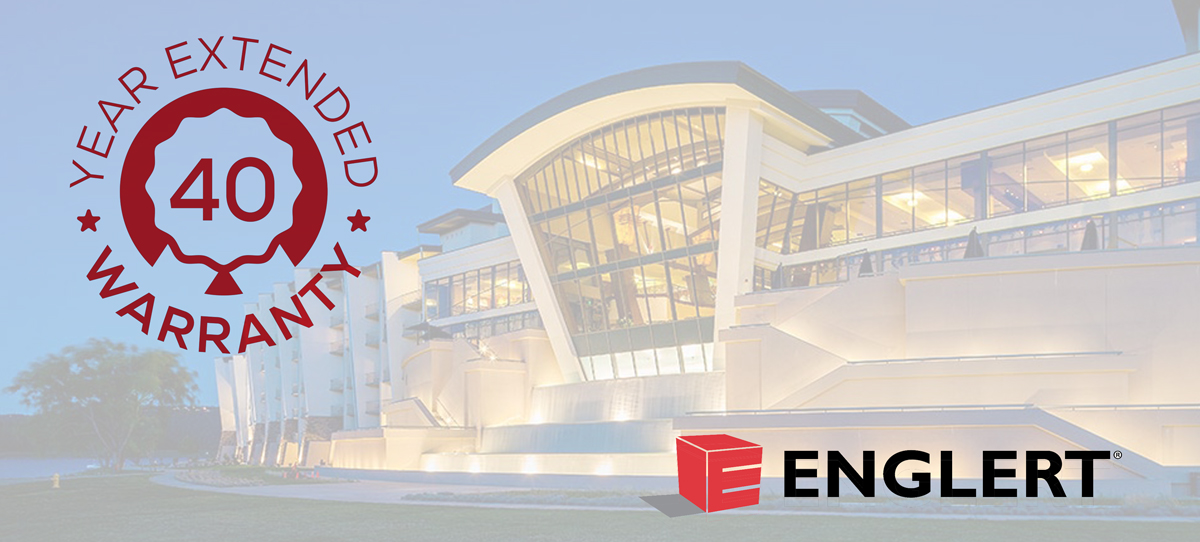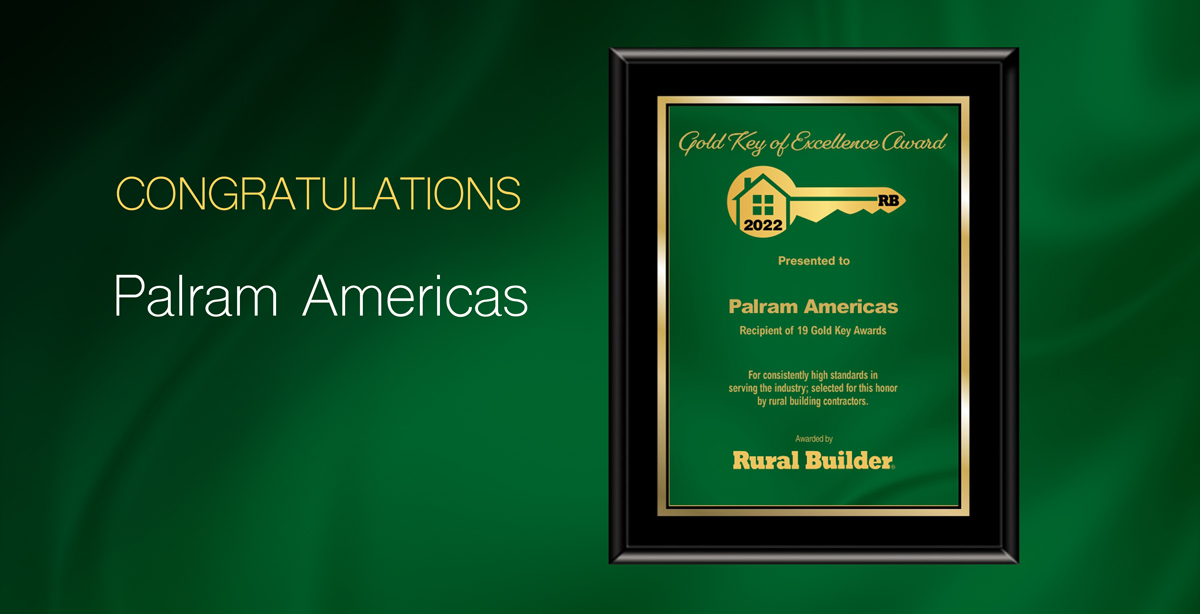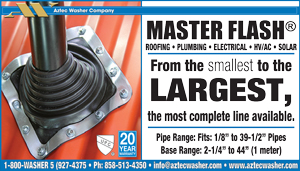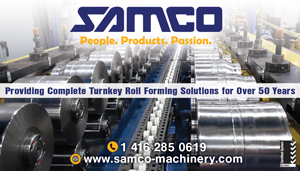By Mark Robins
Thanks to technology and innovation, there are limitless metal faux finishes that look like wood or stone. It’s growing in popularity because it combines the classic rural look of wood with the durability of metal, or similarly allows for a metal-sided building to look like its brick- or stone-home counterpart.
Metal resembling wood improves a building’s design aesthetics, giving it a warm inviting feeling and its lightweight design makes it easy to install. Wood grain metal panel siding requires no repainting, caulking, or sealants, and will not rot and splinter over time. Bob Cujé, president at Modern Materials said, “The look never changes! It remains crisp and clean with zero maintenance.”
Don Switzer, sales manager of Steel Dynamics (SDI), said it is pretty simple to understand that while wood has been used in rural buildings as a primary building component for many years, there are many advantages of using metal with a faux finish. “The customer wants the durability and longevity of steel but wants it to look like real wood from close up and from a distance,” he said. “With wood, you are talking about a limited natural resource. While beautiful, it requires extensive maintenance, including staining or painting to maintain the desired look. With steel, there is little if any maintenance, and with SDI it all starts from recycled scrap steel.”
“Wood looks wonderful when it is new,” said Jessie Schlabach, owner of PermaGuard. “However, the maintenance is prohibitive, the continual staining and painting to keep the wood looking new is very expensive and time consuming. Even after that, you still have the potential of mold, warping, rotting, and termites. On the flip side, steel might be pricier initially, but you will end up with far less cost in the long run.
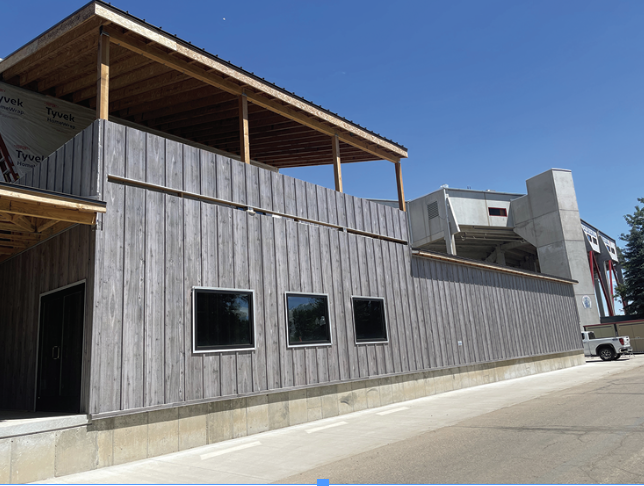
“Typically there will not be $5 million homes built on the lake with faux wood and stone. Somebody with that type of money typically will want real stone etc. What this faux finish movement really benefits is it gives the lower-income and working-class people the option to improve their building project from a commercial cold look to something impressive, at a low cost.”
Cujé explained in terms of price, his 24-gauge siding is really no more per square foot than other metal componentry. “A minimum, splash of wood on feature walls, or soffits will add a decorative aesthetic to typically mundane walls,” he said.
Faux Finish Opportunities
There are many applications and opportunities for this look. Painted metal roofing and siding panels can be given a rusted appearance. Painted metal panels can be made to look like an old patinated copper.
“Garage doors have been the leaders, but homes, barns, and businesses are looking at these new images and seeing endless opportunities,” Switzer said. “Not just for siding, but we have had customers wrap beams in the product, use it as a highlighting trim, used inside buildings versus drywall.”
Modern Materials recently completed a 2,200-square-foot ceiling and soffit on a modern home on the top of a small mountain. “Driving up the steep incline, you first see the amazing canopy of plank style faux wood,” Cujé said. “It is entirely captivating; nature coexisting in modern architecture.”
As far as the faux wood finishes on metal opportunities for builders go, Schlabach added, “It is all about adding options for your customer with the potential to upsell and gain better profit per job, and in turn create a happier customer, more referrals, and more attention to your company.”
Switzer said a metal faux finish product is competitive with wood and cement board. “The digitally printed product is a classic upsell,” he said.
Presentation and sales pitch matters, too. Schlabach gave an example.
“It’s all in the way you present it,” Schlabach said. “If you present it as ‘per cost’ it will seem too expensive to the customer.
“For example, Mr. Customer, we can use standard metal on your building project, or we can use this ‘expensive wood siding.’ The cost difference is standard metal $3 per foot and that stuff is $5.
“The customer typically responds with, ‘Wow I can’t afford that.’
“Example #2 is Mr. Customer, you are building a 40’x60’ pole-frame building and you are spending $60,000 on this project. Using this material will cost approximately $5,000 more, so you are going from $60,000 to $65,000 and you are taking your project from a standard commercial look to something impressive.
“Oh. I think I can afford that!”
The point is that with these new products, you can make an expensive-looking upgrade far more affordable than in the past. “If you are trying to match the look of a reclaimed wood, metal would actually be cheaper,” said Paul Rubio, vice president, Western States Metal Roofing. “It’s also easier to install a metal board-and-batten panel versus a real wood board-and-batten panel.”
To further upsell the look of a faux finish on metal specifically to a farmer or ag business, Cujé said his company can offer PVDF wood series panels with a 30-year color warranty. “It’s a fact — today’s science is doing things unobtainable from 10 years ago,” he said. “It not necessarily an upgrade, it’s an everyday expectation.”
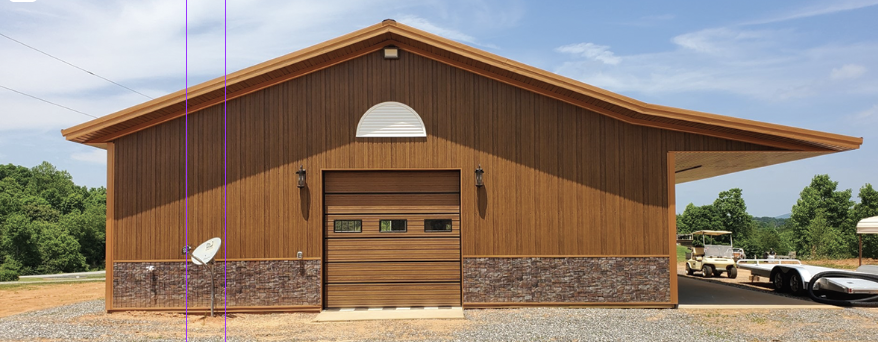
The Technology Behind the Faux
How is it possible to make metal convincingly look like wood via a faux finish? Switzer said for years printed images were made using old technology called Rotogravure. “This is an embossed roll of an image that would print ink on a coil and repeat from 28 to 32 inches,” he said. “That technology is very limited from a color standpoint and the repeat does not allow the true character of a wood image to be fully realized. Several years ago, SDI invested in new technology that allows us to digitally print any image and color, and it does not repeat for up to 32 feet.”
Cujé said at Modern Materials, its steel siding is all PVDF technology, “We have complete confidence in weathering and long-term results,” he said. “Beyond the advancements in chemistry is the new printing technology. Our realism is upgraded to the point where natural wood simply looks bad. The public expects perfect wood grain replication long term.”
PermaGuard’s paint system is the secret behind its ability to mimic the appearance of real wood and stone. Utilizing Kynar 500, a premium paint coating renowned for its superior performance, PermaGuard achieves remarkable resistance to chalk and fade, outperforming many other industry options. However, Schlabach said the paint system is more than just a pretty façade. “It is meticulously designed to protect the panel from various elements,” he said. “The available options for the wood prints include Red Oak, Natural Pine, Honey Gold, Dark Cherry, and Weathered Wood.”
Rubio called specialty paint prints “a metal panel that’s been painted repeatedly.”
“The paint line applies a base coat of solid color on the coil and then the coil runs through a second time with a different color using a special engraved paint roller that creates a pattern on the coil,” he said. “You end up with a two- or three-tone paint system that’s absolutely stunning and completely different than a solid metal roofing color.”
Installation Tips
Installing faux finish products is as easy as any metal product, using the same tools and fasteners without specialized equipment or techniques. Installation should be performed by an installer familiar with metal building component installation. There are installation guides and videos that can assist in the installation process.
Jessie Schlabach, owner of PermaGuard, cites the following installation tips:
Proper preparation.
Before installation, ensure the surface is clean, dry, and free of any debris or contaminants. This will promote optimal adhesion and longevity of the siding. Additionally, check that the structure has a suitable moisture barrier to prevent moisture-related issues down the line.
Accurate measurements.
Take precise measurements of the area to be covered by the faux finish panels, allowing for appropriate panel lengths and minimizing waste. Accurate measurements ensure a seamless and professional-looking installation.
Quality tools and fasteners
Use high-quality tools and fasteners recommended for metal siding installation. This will ensure secure attachment and minimize the risk of damage or loosening over time. Consult manufacturers’ installation guidelines for specific tool and fastener recommendations.
Sales Tips for Builders
Educate customers
Highlight its unique benefits such as its exceptional durability, low maintenance requirements, and authentic wood/stone appearance. Educating customers about the advantages of this innovative siding solution will help them make informed decisions and appreciate the value it brings to their projects.
Showcase the aesthetics
Utilize samples, brochures, or visual aids to demonstrate the stunning wood prints available. By showcasing the aesthetic appeal of the product, builders and contractors can capture the attention and imagination of potential customers.
Share testimonials and success stories
Incorporate testimonials or success stories from previous projects where it was used. Highlighting positive experiences and satisfied customers can instill confidence and trust in prospective clients.
— Jessie Schlabach, owner, PermaGuard
RB


